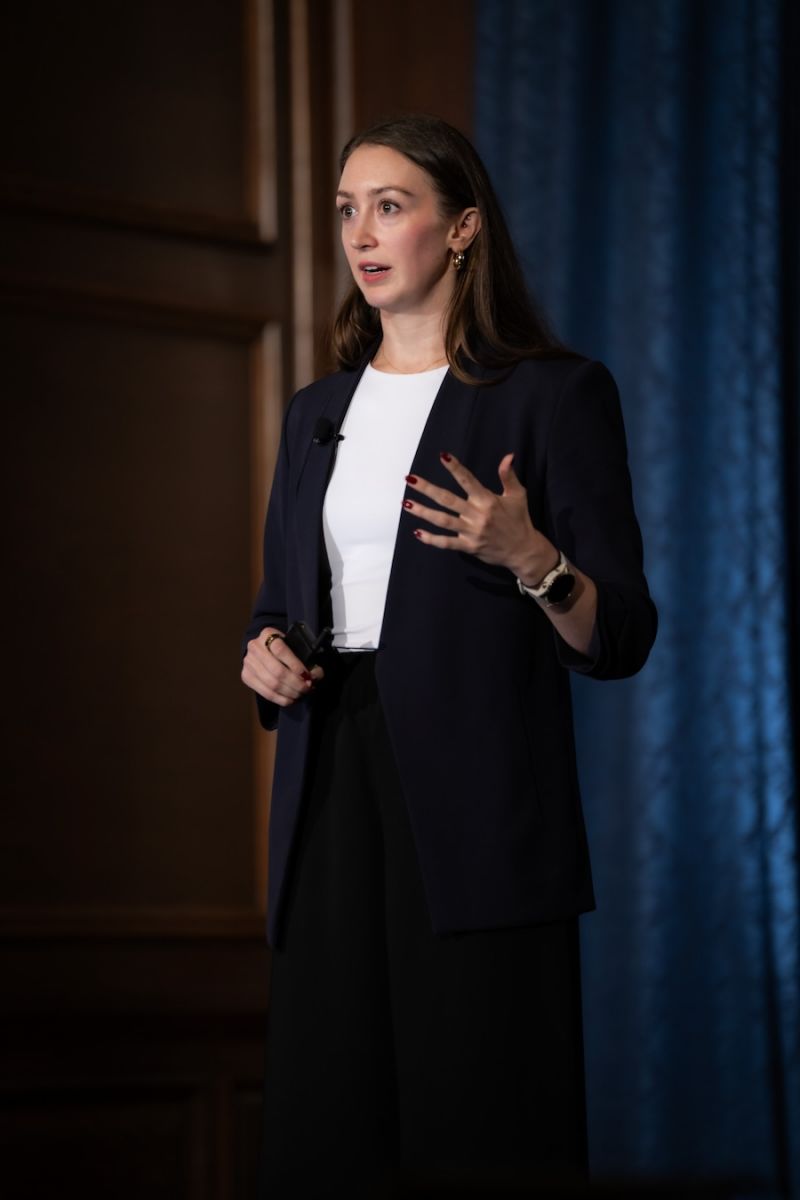The Science of Positive Change: Making HR Initiatives Stick


Making HR initiatives stick is a science: behavioral science. With it, organizations can overcome the intention-action gap, the intention to fulfill a goal, but not achieve it because of underlying mental and psychological deterrents.
“We think, if we give people the information, they’re going to take it in, they’re going to analyze it consciously, rationally,” said Suzanne Kirkendall, CEO, North America of BVA Nudge Consulting. But that doesn’t happen without effective positive reinforcement. Underlying negative or maladaptive behavioral patterns hinder proactivity and productivity.
If organizations want to meet KPI goals, these must be considered when developing initiatives. The company’s methodology integrates behavioral interventions, guiding organizations in achieving sustainable positive behavioral changes in their employees, Kirkendall shared during a thought leadership spotlight at From Day One’s Philadelphia conference.
The Four Key Pillars to Embrace Something New
During the session Kirkendall outlined four key pillars that every organization should embrace when taking on major initiatives.
The first pillar is to design initiatives with simplicity in mind—fewer links, fewer steps, and clear, easy-to-follow instructions for teams. Even small adjustments can make a big difference. For example, removing just one step from a benefits enrollment process can boost completion rates, while a streamlined platform experience keeps employees more engaged.

The second pillar is to communicate with meaning. An example of this is in hospitals that reframe custodial work from being monotonous tasks to critical objectives in helping patients see improved employee performance and job satisfaction, she says.
Additionally, a more compelling call-to-action highlights the professional benefits of employees completing reviews or a questionnaire, which improves response rates.
“This is all about acknowledging your accomplishments. You work hard. You deserve to have that acknowledged. This is about your career growth. That’s exciting, that’s inherently motivating for people.”
The third pillar is to harness social proof. Influential messengers such as a manager’s name or signature can boost engagement. Let employees know when others are completing a specific task, and include the number of peers who have finished their reviews in future emails. When employees see their colleagues taking action, they are more likely to do the same.
Lastly, the fourth pillar is timeliness. This means delivering information precisely when employees need it and sending reminders at the most effective times, whether by day, week, or around upcoming holidays.
For example, a BVA client with a two-week deadline for annual employee reviews designed their emails to drive proactive responses. They placed a prominent red button at the top as a clear call-to-action, kept instructions simple, and made the communication personal and engaging, starting with a subject line crafted to motivate recipients to open the email.
“We use personalization, of course, by making sure that their name was in there, pretty straightforward, but also personalization as it related to their journey,” Kirkendall said. Then, using a particular cadence, the client communicated as a leader giving guidance, contrasting the typical cadence of an automated message. The client proceeded by mentioning how many people have already completed the process. This encouraged quicker engagement.
Finally, the client was advised to send the information so that employees can take action immediately. That meant avoiding sending reminders on holidays.
Why Strategic, Positive Reinforcement is Necessary
Behavioral science combines social psychology, organizational psychology, neuroscience, and more to assess human behavior. According to Kirkendall, there are four reasons why science-backed strategic and positive reinforcement are necessary to drive sustainable positive behavioral changes.
The first reason is that we’re inherently biased. People operate on autopilot unconsciously to navigate life’s challenges more easily.
The second reason is that we make decisions depending on context. How someone phrases a situation or how they’re dressed will provoke different actions and reactions.
Third, we’re affected by our emotions. Kirkendall recalls how people who, due to brain injury or illness, experience greater difficulty making decisions because of emotional dysregulation.
Lastly, we’re pro-social: we care about others’ opinions and want to be accepted by people we relate to.
Therefore, acknowledging these underlying social and psychological factors helps leaders strategize positive reinforcement. This bridges the intention-action gap in completing initiatives.
Kirkendall calls this nudging, which is the essential component of the BVA Nudge. “So nudging is all about looking at the moment of decision and saying, ‘How can I shape the context of this moment to make the desired behavior the easiest behavior? And how can I remove friction between the current and desired state?’”
Editor’s note: From Day One thanks our partner, BVA Nudge Consulting, for sponsoring this thought leadership spotlight.
Stephanie Reed is a freelance news, marketing, and content writer. Much of her work features small business owners throughout diverse industries. She is passionate about promoting small, ethical, and eco-conscious businesses
(Photos by Josh Larson for From Day One)
The From Day One Newsletter is a monthly roundup of articles, features, and editorials on innovative ways for companies to forge stronger relationships with their employees, customers, and communities.